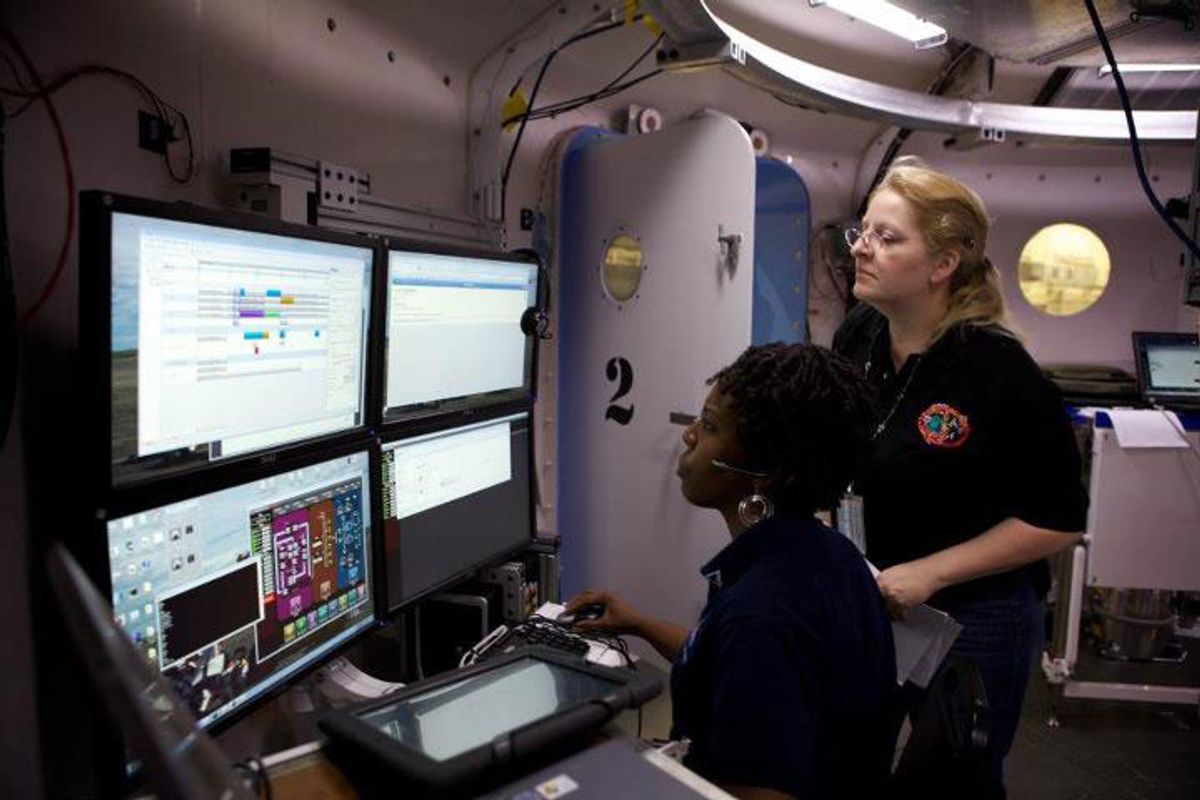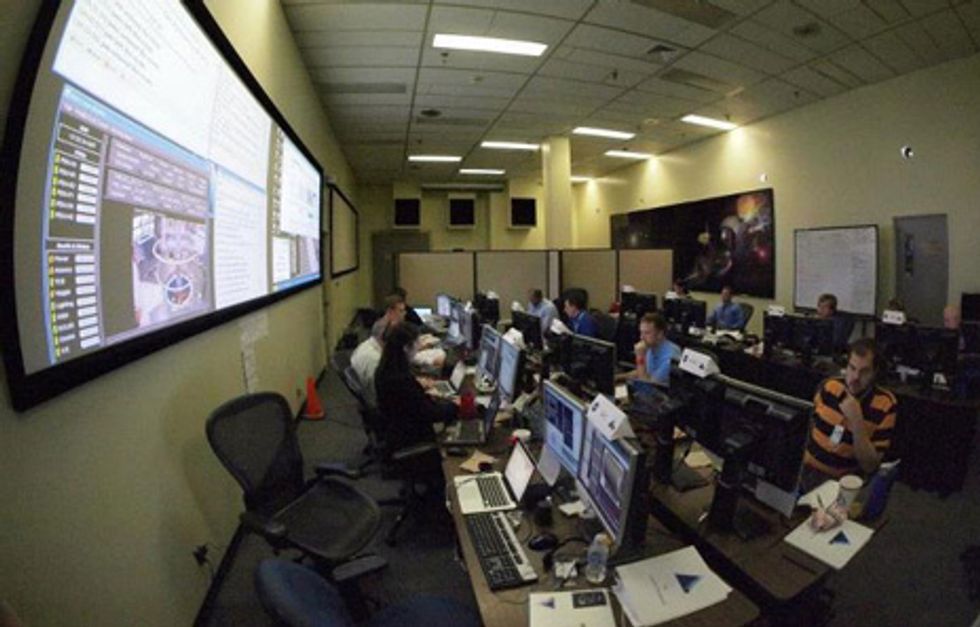22 June 2012—In anticipation of deep-space missions to near-Earth asteroids and beyond, a team of researchers is trying out techniques that could rewrite NASA’s rules for human spaceflight.
Last week, using a mock-up of a spacecraft at the Johnson Space Center, in Houston, the team conducted the second of a two-part series of simulations designed to test how well flight controllers and astronauts work together when separated by distances well beyond those of the Apollo lunar program of the 1960s and ’70s.
During Apollo, it took radio signals only about a second or two to make the trip between Earth and the spacecraft, allowing almost instant communication between mission control and the crew, explains Jeremy Frank, the principal investigator for the Autonomous Mission Operations group, which conducted the tests. Deep-space missions would involve communication delays that are much longer, ranging from a few seconds to many minutes.
“One of the things that raises operationally is the question of, What should the crew do? What should the ground do?” says Frank, who is based at NASA’s Ames Research Center, in California. During space missions, the ground traditionally monitors the spacecraft and plans out tasks, and the crew executes those tasks. (Astronauts who try to exercise more control over a mission have been punished in the past. The Apollo 7 crew, after a notoriously fractious relationship with mission control during its 11-day flight, never went into space again.)
The first round of tests, conducted in May, was performed in line with NASA’s current procedures. Three 2-hour scenarios—a normal return from a mission to an asteroid, a return with a spacecraft system failure, and a return with an onboard medical emergency—were each simulated with time delays of 1.2 seconds, 50 seconds, and 5 minutes. In the second round of tests, the crew had access to software tools currently used only by ground-based planners and spacecraft support teams, as well as a combination of other technologies.
Frank and his team are still analyzing the results, but one surprise stood out: The time delay that posed the biggest challenge was not the longest—the 5-minute delay—but the 50-second delay. “Fifty seconds is just long enough, where your expectations of an immediate response are violated, but it’s not so long that it’s blindingly obvious to you that you are going to have to wait,” says Frank.
One of the new techniques that proved popular with simulation subjects was to replace voice communications with text-based “chat” sessions. Another popular tool was a system that allowed flight controllers to monitor how far along an astronaut had gotten in a procedure without having to interrupt him or her for a status update. With this portable system, crew members stepped through procedures as they worked on a task, and mission control automatically received notifications of each step as the astronauts advanced through procedures.
Although these may seem like relatively minor developments, in concert with giving astronauts the tools to plan their own tasks and analyze faults, the Autonomous Mission Operations group is actually reopening a debate about control that goes back to the 1960s. It’s a debate that could ultimately have an impact on how spacecraft are designed and what kinds of people should be selected as the crew.
“The early vision of the Apollo capsule included a microfilm reader that had the complete plan of all the systems," says David Mindell, an astronautics and history of engineering professor at MIT. That wasn’t really practical with the technology of the time, but that’s who [the designers] envisioned would be flying: people who could read those drawings and understand what was going on. Gradually, that knowledge got pushed out to those on the ground.” Now that knowledge could get pushed to the crew, explains Mindell, who is history of engineering professor at MIT and the author of Digital Apollo (MIT Press, Cambridge, 2008).
Indeed, since Apollo, the trend has been for more and more ground supervision. Although the crew of the International Space Station is constantly busy, running experiments and performing maintenance, the station is, by design, largely operated from the ground. Mindell warns it may be difficult to persuade NASA’s ground staff to give up control, saying that retaining it gives them “legitimacy and employability—and they’re genuinely convinced that the way they do it is the only way to do it safely.”
For his part, Frank believes that the simple physics of the light-speed delay will force change and that it’s best to start exploring what changes to make before mission architectures get locked in. Still, he worries that the research his group and similar forward-looking teams are conducting may not be integrated into NASA’s planning. Without that integration, says Frank, “then we’re a bunch of little stove-piped projects that aren’t talking to each other, and that doesn’t help us figure out what to do.”

